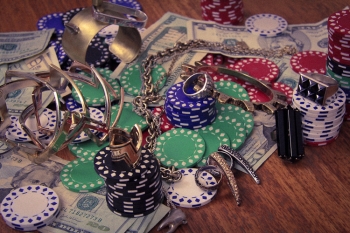6-Max No Limit Holdem Games and Set Mining

Set mining is a practice – basically a simplified strategy-approach – well known by pretty much all experienced online poker players. Set mining is about the extreme exploitation of the implied odds that drawing hands like poker pairs generate. The theory behind set-mining is simple: the player tries to see a flop as cheaply as possible every time he picks up a pocket pair (yes, even small pocket pairs like deuces do just fine), in the hope of making a set. A set is a monster hand which is barely readable, therefore, on a set a player can rightfully hope that he will end up taking someone’s entire stack. While the set miner will end up losing money on the flops he sees (landing a set doesn’t exactly happen on cue) he will more than recover those losses when his set lands. In the hands of a skilled player, the approach is apparently so efficient that it can even beat micro-stakes games. How does set-mining work in a NL 6-max game though?
Let’s start at the very beginning: in short handed games, starting hand values go down quite a bit. Players are willing to take much lesser starting hands to the flop, fully aware of the fact that the reduced number of opponents means the odds of their starting hand being beat from the get go are slimmer. What this does though, is that it creates aggression. Aggression has always been preached as the key tool of a successful poker player, and those teachings coupled with the naturally increased aggression in short-handed games have created a hotbed of aggression in 6-max games. Limping a pocket pair to the flop is no longer an option for 6-max players. In these games, the environment has long gotten past the point of extreme adversity towards anything that has anything to do with limping.
The good news is, dropping starting hand values and the livid aggression will pretty much turn pocket pairs into monster starting hands, thus giving their possessors new ways to play the hand. In a 6-handed NL Holdem game, set miners should always raise their pocket pairs, even from early position. There are fewer players that will act behind any given player, therefore the odds of someone holding a better hand are radically smaller. Regardless of that though, given the fact that pocket pairs only go on to make a set about 11% of the time, the move seems to reek of blind aggression rather than anything else. What happens the ~89% of the time when the set fails to fall? The answer to that question is actually surprisingly simple: our set miner will simply play poker. After all, poker is not about waiting for the perfect hand to fall then playing it the same way every time. It’s about turning a drawback into an advantage. It’s about deceit and covert ops. It’s about strategy. Firing a continuation bet on a missed flop in a short-handed game still makes tons more sense than the same move would in a full 10-handed game. If you take your pocket pairs to a missed flop coming off a raise, you still have fold equity and your table image remains as solid as ever. Do the same thing without the preflop raise and you’ll be in a much worse position.
Regardless of how you do your short-handed set mining, sign up for a poker rake rebate deal. You may even want to consider a poker prop deal. A site like www.pokerprops.com will set you straight in that respect.




